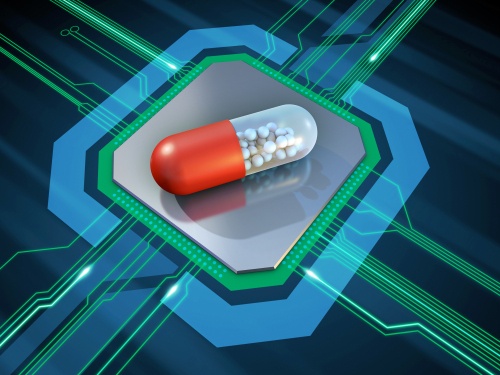Share this
therapeutic drug monitoring: 5 TDM predictions that will surprise you
by Neoteryx Microsampling on Oct 22, 2018 1:56:00 AM
Therapeutic Drug Monitoring (TDM) is a procedure used to help determine the concentration of drugs in a person's bloodstream. TDM helps doctors monitor patients who are taking therapeutic drugs, to ensure drug efficacy and to avoid drug toxicity. More broadly, TDM describes a branch of clinical chemistry that works in collaboration with other fields, including pharmacokinetics as well as pharmacogenomics.
The discipline of TDM is expected to report some significant developments in the coming years, particularly in organ transplant medicine. Organ transplant patients must be monitored routinely for creatinine levels and tacrolimus levels in their blood.
The following are some of the projections and important transformations expected of TDM in the near future.

- Advancements in Epilepsy Therapeutics. Technological growth has led to a high growth rate in the treatment of neurological disorders. One such disorder is epilepsy, which involves repeated seizures of different classifications. The dominant market in epilepsy therapeutics is North America. This market is being driven by better healthcare equipment as well as increased knowledge on the disorder. In the next five years, India, Europe, and China are expected to experience high growth in epilepsy therapeutics.
- Innovation in therapeutic drug monitoring will be driven forward by a confluence of factors, including increased participation of private and government sectors in the TDM market, increase in drug profiling, and the improved healthcare system.
- Ongoing issues, including retrenchment in hospital and reimbursement of funds, are expected to affect the TDM market. Allocation of resources and fluctuations in the global market are also expected to affect the field.
- Expansion will occur in the TDM field, as appreciation and understanding of the importance of TDM increases.
- Microsampling technologies will continue to revolutionize the TDM field and gain wider adoption. Since TDM requires drawing of blood at regular and frequent intervals, a benefit of microsampling is that it can enable remote blood collection and remote monitoring of patients. Blood microsamples can be used to generate useful results using very small amounts of blood.
For these reasons, microsampling is expected to be the blood collection technique that drives TDM innovation forward. New results and methods indicate this shift is already in progress. Toxicology and clinical labs are already processing microsampling for TDM studies and programs.
The therapeutic drug monitoring market is expected to grow quite a bit as it plays an important role in treatment and improvement of overall quality of life.

Image Credits: Trajan, Neoteryx, Shutterstock
Share this
- Microsampling (206)
- Research, Remote Research (119)
- Venipuncture Alternative (105)
- Clinical Trials, Clinical Research (83)
- Mitra® Device (73)
- Therapeutic Drug Monitoring, TDM (51)
- Dried Blood Spot, DBS (39)
- Biomonitoring, Health, Wellness (30)
- Infectious Disease, Vaccines, COVID-19 (24)
- Blood Microsampling, Serology (23)
- Omics, Multi-Omics (21)
- Decentralized Clinical Trial (DCT) (20)
- Specimen Collection (18)
- Toxicology, Doping, Drug/Alcohol Monitoring, PEth (17)
- Skin Microsampling, Microbiopsy (14)
- hemaPEN® Device (13)
- Preclinical Research, Animal Studies (12)
- Pharmaceuticals, Drug Development (9)
- Harpera Device (7)
- Industry News, Microsampling News (5)
- Antibodies, MAbs (3)
- Company Press Release, Product Press Release (3)
- Environmental Toxins, Exposures (1)
- July 2025 (1)
- May 2025 (1)
- April 2025 (2)
- December 2024 (2)
- November 2024 (1)
- October 2024 (3)
- September 2024 (1)
- June 2024 (1)
- May 2024 (1)
- April 2024 (4)
- March 2024 (1)
- February 2024 (2)
- January 2024 (4)
- December 2023 (3)
- November 2023 (3)
- October 2023 (3)
- September 2023 (3)
- July 2023 (3)
- June 2023 (2)
- April 2023 (2)
- March 2023 (2)
- February 2023 (2)
- January 2023 (3)
- December 2022 (2)
- November 2022 (3)
- October 2022 (4)
- September 2022 (3)
- August 2022 (5)
- July 2022 (2)
- June 2022 (2)
- May 2022 (4)
- April 2022 (3)
- March 2022 (3)
- February 2022 (4)
- January 2022 (5)
- December 2021 (3)
- November 2021 (5)
- October 2021 (3)
- September 2021 (3)
- August 2021 (4)
- July 2021 (4)
- June 2021 (4)
- May 2021 (4)
- April 2021 (3)
- March 2021 (5)
- February 2021 (4)
- January 2021 (4)
- December 2020 (3)
- November 2020 (5)
- October 2020 (4)
- September 2020 (3)
- August 2020 (3)
- July 2020 (6)
- June 2020 (4)
- May 2020 (4)
- April 2020 (3)
- March 2020 (6)
- February 2020 (3)
- January 2020 (4)
- December 2019 (5)
- November 2019 (4)
- October 2019 (2)
- September 2019 (4)
- August 2019 (4)
- July 2019 (3)
- June 2019 (7)
- May 2019 (6)
- April 2019 (5)
- March 2019 (6)
- February 2019 (5)
- January 2019 (8)
- December 2018 (3)
- November 2018 (4)
- October 2018 (7)
- September 2018 (6)
- August 2018 (5)
- July 2018 (8)
- June 2018 (6)
- May 2018 (5)
- April 2018 (6)
- March 2018 (4)
- February 2018 (6)
- January 2018 (4)
- December 2017 (2)
- November 2017 (3)
- October 2017 (2)
- September 2017 (4)
- August 2017 (2)
- July 2017 (4)
- June 2017 (5)
- May 2017 (6)
- April 2017 (6)
- March 2017 (5)
- February 2017 (4)
- January 2017 (1)
- July 2016 (3)
- May 2016 (1)
- April 2016 (2)


No Comments Yet
Let us know what you think